‘Antiques Roadshow’ appraisers pan for TV gold at Winterthur
The popular PBS show, along with its crew of expert appraisers, pans for gold in the heart of Delaware antiques country.
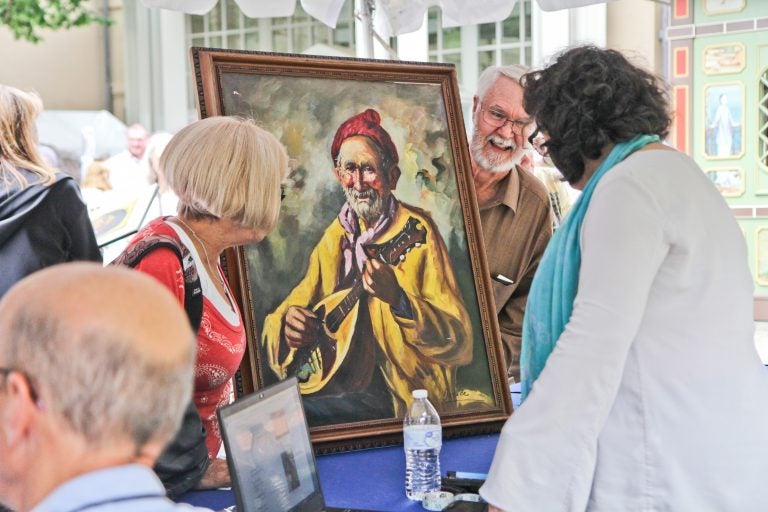
An appraiser examines a painting at the Antiques Roadshow taping at Winterthur. (Kimberly Paynter/WHYY)
John Sollo looked at a late-19th-century American chair made of black oak. A tall, heavy, straight-back chair intricately carved with cherubs. Its red velvet upholstery was almost pristine.
He was impressed.
“I hate to say it, but furniture is amazingly classist,” said Sollo, an appraiser from Lambertville on deck for a taping of “Antiques Roadshow” this week at Winterthur, in Delaware. “There are poor people’s chairs, middle-class people’s chairs, and rich people’s chairs. And this — somebody paid a lot of attention to this, and paid attention to every inch of it.”
The chairs were brought to him by a guy named John from Unionville, Pennsylvania., who said he bought them several years ago from someone who claimed they were originally purchased at the 1876 World’s Fair in Philadelphia.
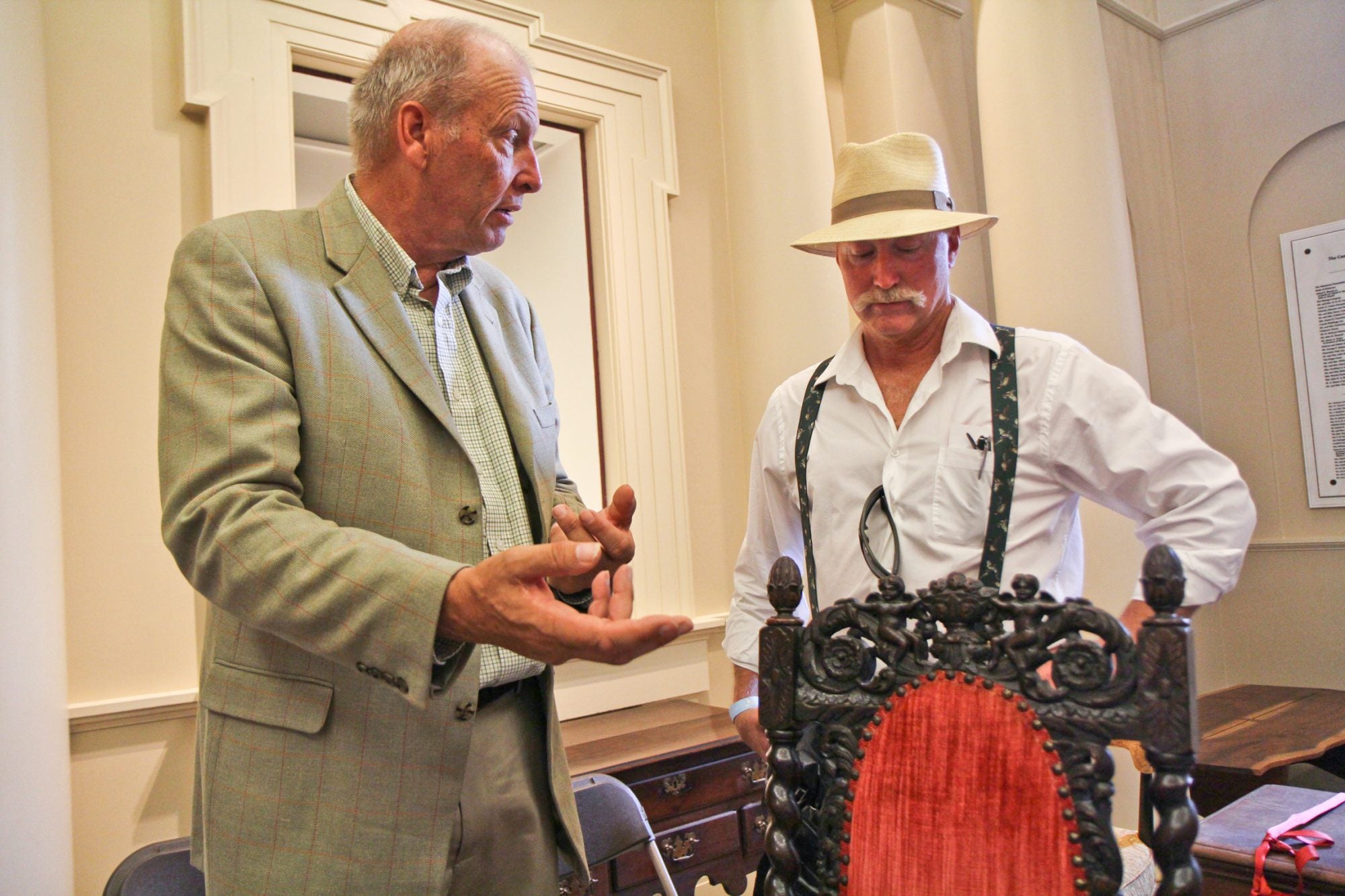
“I will warn you that, in my experience, 98% of stories that go with furniture are completely not true,” said Sollo, skeptical of the provenance. The age of the chairs appeared to be authentic, however.
“It’s a happy chair,” said John, the owner, beaming about his Victorian throne. “No gargoyles or anything. Just cherubs.”
“You don’t like gargoyles?” Sollo asked.
“Well, they have their place,” said John, a woodworker. “But I’m better with cherubs.”
Sollo’s banter was a means to assess both the object and its owner because, if selected, both will be on camera for an episode of “Antiques Roadshow,” a PBS stalwart for 24 years.
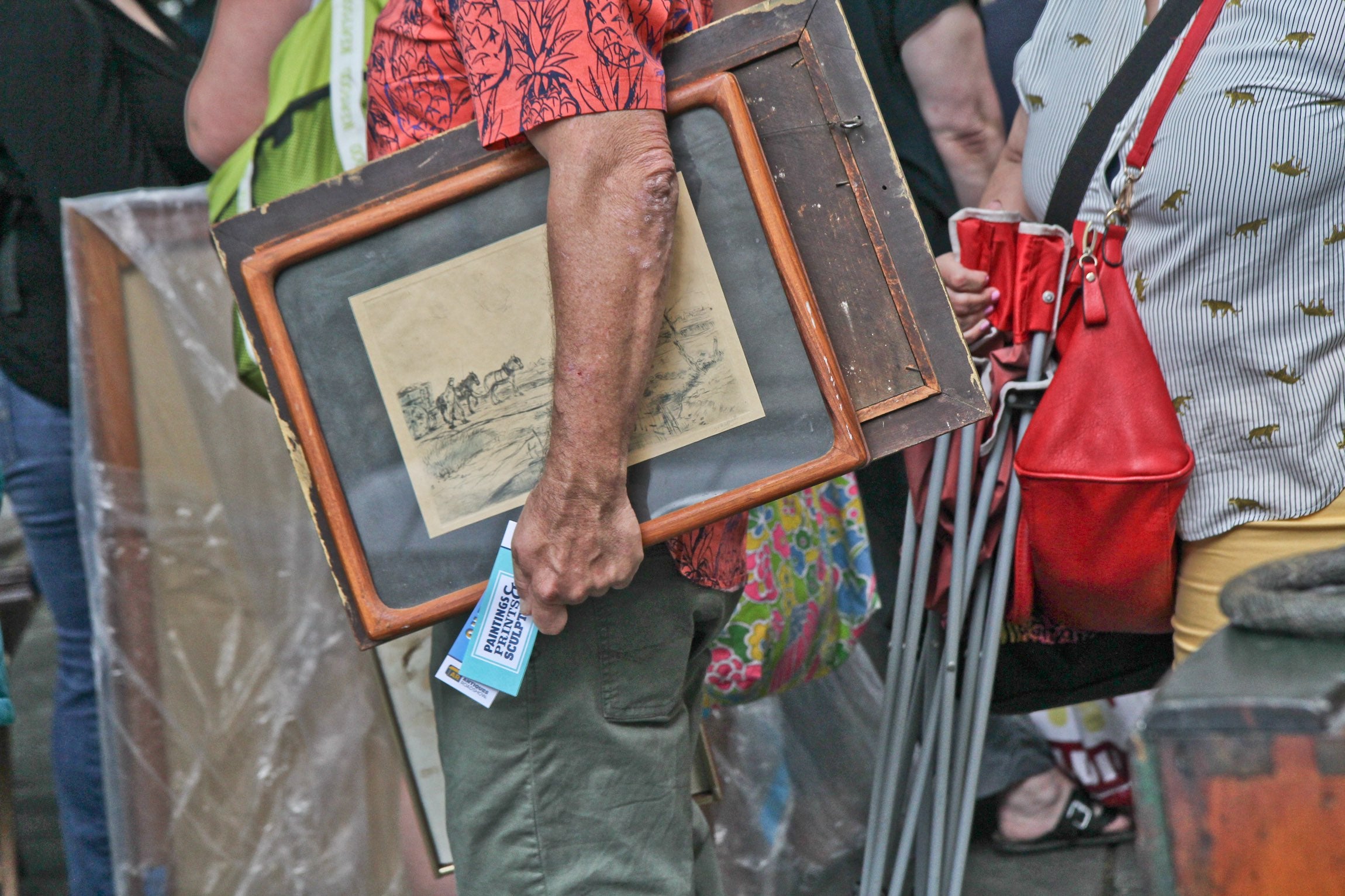
The show’s formula is as simple as it is effective: Find an object with a good story, explain its history in less than 90 seconds, then cap it off with an estimated dollar amount. Repeat every three minutes for an hour.
“Story is king,” said executive director Marsha Bemko, explaining what she was searching for to put on camera. “I’m really looking for a good story, we always like to see regional objects. And — let’s face it, this is `Antiques Roadshow’ — you got something extremely valuable? We’re probably interested.”
About 17,000 people apply to bring their treasures, baubles, heirlooms, curiosities, and junk to a taping of “Roadshow.” Three thousand get tickets. Of those, only 150 will eventually make it on camera.
A couple from Pike Creek, Delaware, had been trying to get on the show for years. Chrissy and Bill — last names are not used for security reasons, per “Antiques Roadshow” — had already chased the production through Pittsburgh, Philadelphia, and New York.
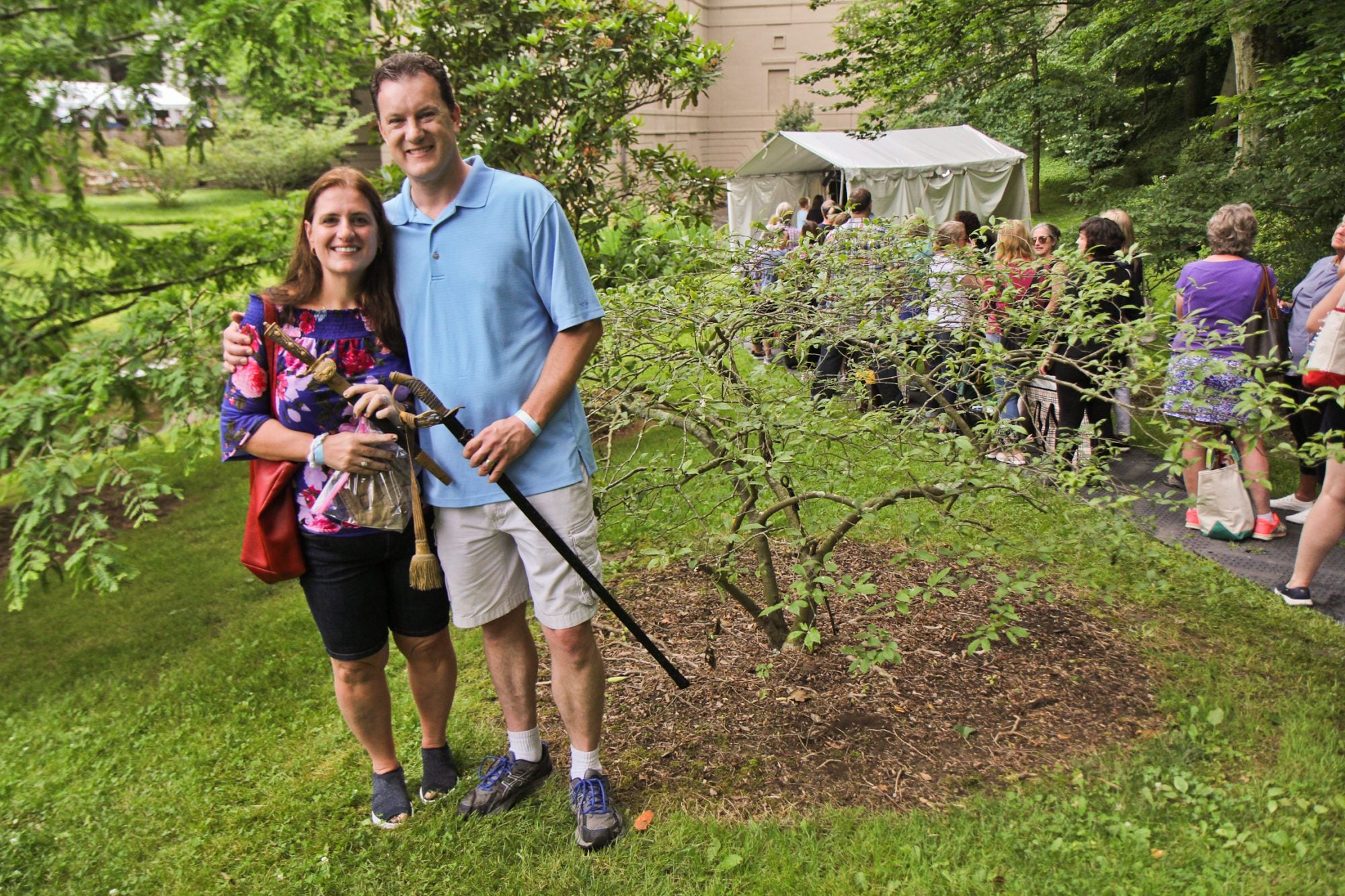
“When we found out it’s right in our hometown, we got so excited,” said Chrissy. “We’re running out of antiques to get appraised.”
They’d brought jewelry, swords, a doll, an early baseball glove. But so far, nothing had gotten them on the show.
“No, but I tell you it’s just so fun,” said Chrissy. “You stand in line and talk to people around you. You hear all their stories. Then you eavesdrop on people’s stories. You really kind of learn a lot.”
The appraisers keep coming back, too, on their own dime. Many have a distinctive look to accentuate their screen time (a ponytail, a handlebar mustache, a powder-blue bow tie, a windowpane-plaid three-piece suit). Some become minor celebrities on their own.
“We all enjoy it,” said Alasdair Nichol of Freeman’s auction house in Philadelphia, whose Scottish brogue and deep knowledge of 19th- and 20th-century paintings have been made him a regular on the show. “We’re competitors the rest of the year, but there’s a great camaraderie here. We’re all bouncing ideas off each other, comparing notes and comparing knowledge.”
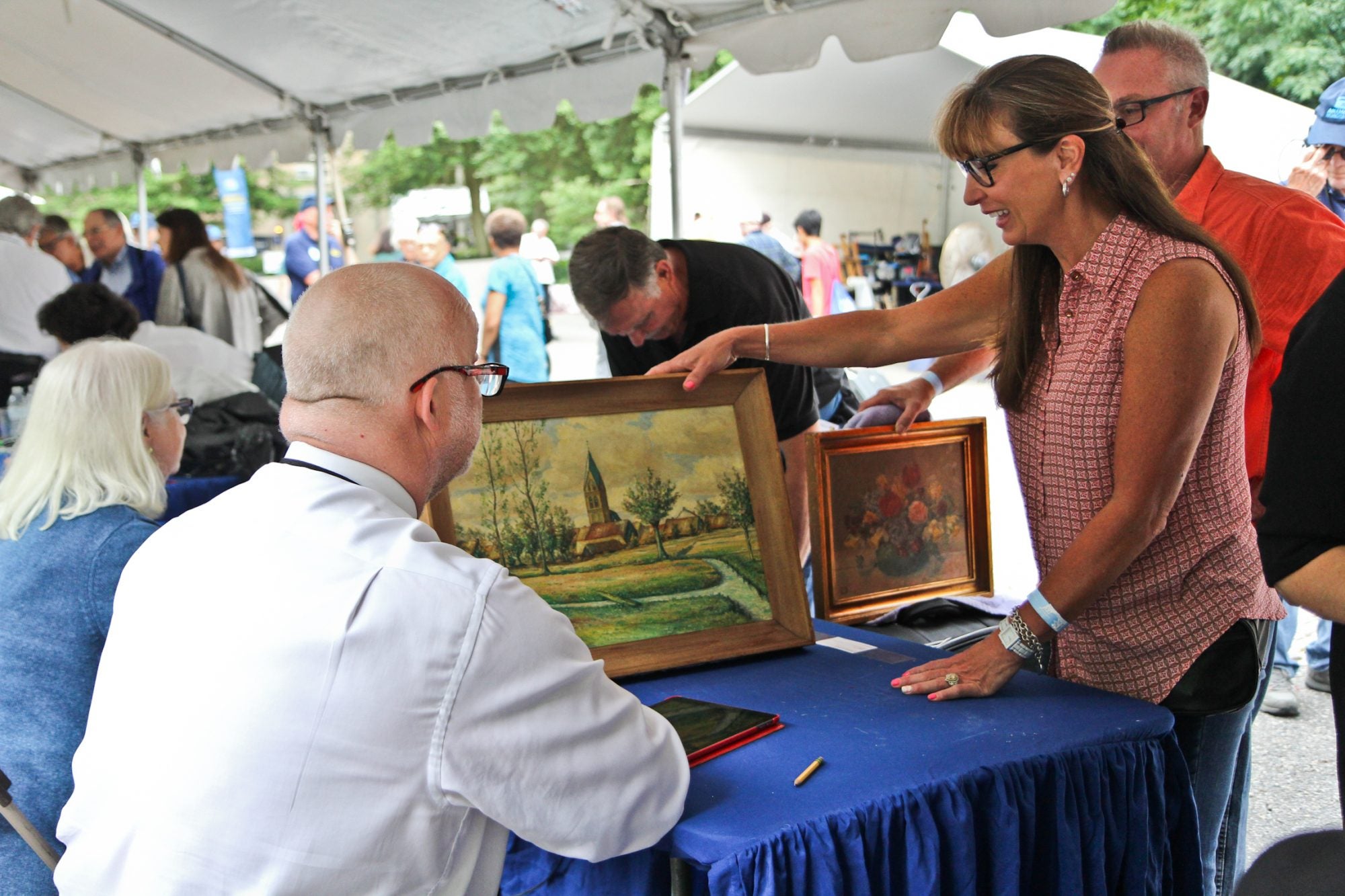
Nichol was stumped by a woman named Vicki and the two watercolor landscapes she brought. Though she now lives in Indiana, Vicki grew up in Philadelphia and worked this visit to “Antiques Roadshow” into her trip back home.
“We came primarily to bury my mom and dad’s ashes in a cemetery in Ansonia, Connecticut, where my dad is from,” Vicki said.
Her two paintings, both by Max Hermann, did not end up being a gold mine. Nichol wasn’t able to find much on the obscure artist. Based on the quality of the work, he estimated they might be worth a couple of hundred dollars apiece. But that didn’t matter to Vicki.
“Yeah, because I can remember them hanging on a wall in our house in Philadelphia,” she said.
Winterthur, itself, is an antiques mecca. The 19th-century mansion built by the Du Pont family is furnished with priceless Americana, as well as home to a conserved archive of furniture, textiles, and decorative arts. It has curated, museum-quality gallery spaces and a credentialed academic program to train conservators.
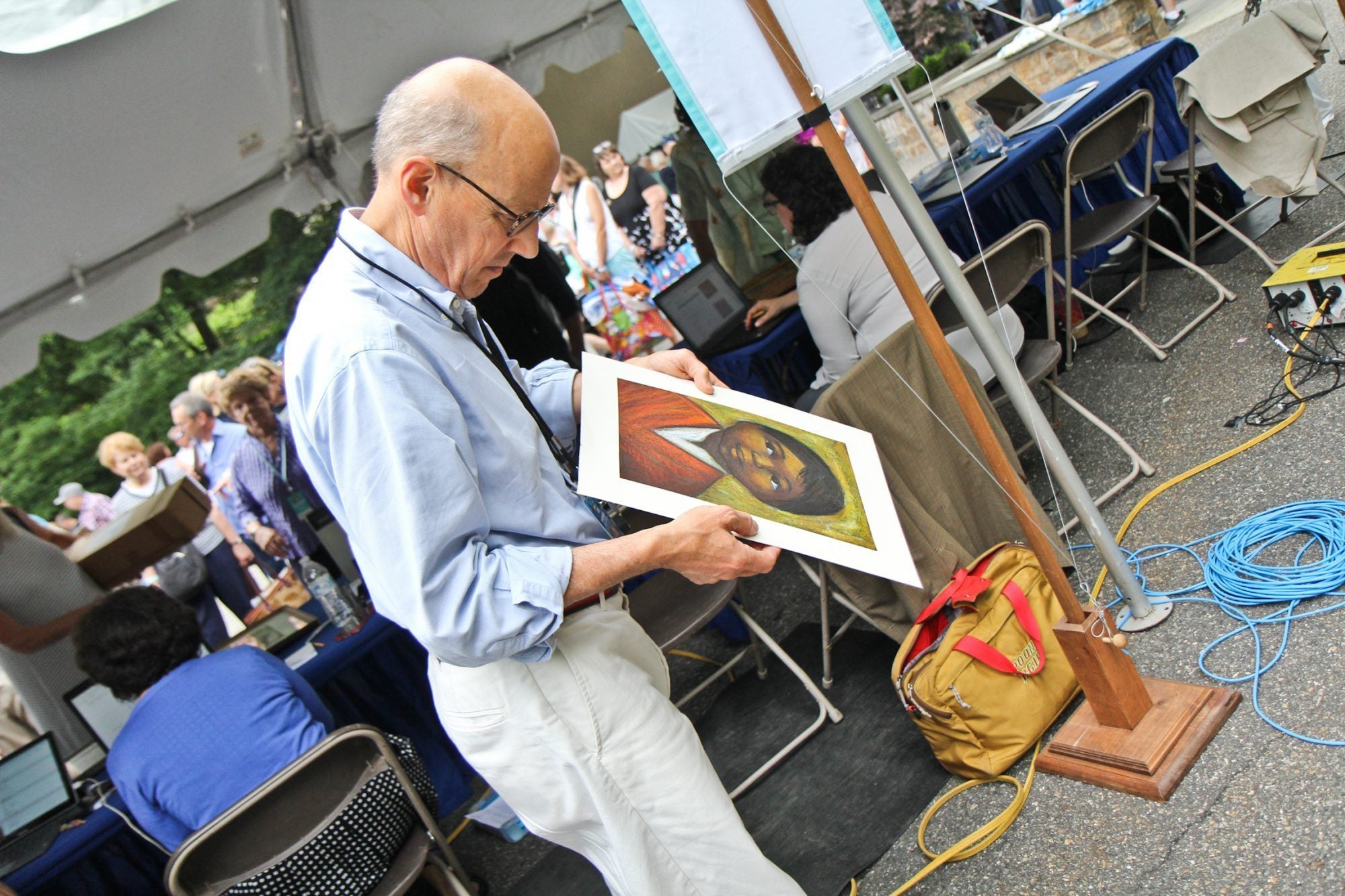
Though it gets its fair share of visitors on weekends, particularly in the summertime when the gardens are lush, Winterthur is not used to a crush of 3,000 people toting family artifacts.
“It’s been great! It’s a well-oiled machine,” Joy Gardiner, Winterthur’s director of conservation, said about the “Antiques Roadshow” production.
She was on hand for the rain plan: Should the weather turn, everything would come inside, hoi polloi and all.
Gardiner’s job, in that case, would have been to check for bugs. The house, after all, must be kept meticulously clean to a museum-archive standard. Those objects, whether treasure or trash, must not mix with hers.
“If something came in that has been in somebody’s attic for 20 years,” she said, “in this area particularly, you find silverfish everywhere.”
WHYY is your source for fact-based, in-depth journalism and information. As a nonprofit organization, we rely on financial support from readers like you. Please give today.





